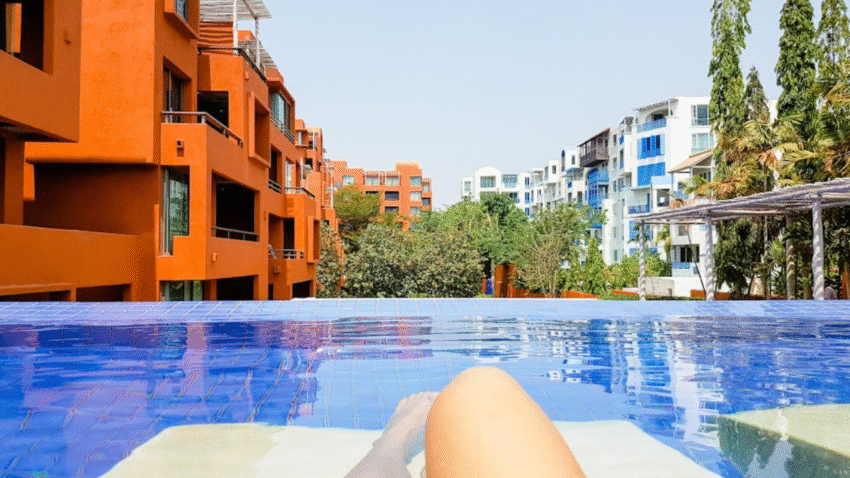Introduction
Has your pool water become impossible to balance, or are you dealing with extreme staining, algae, or high total dissolved solids (TDS)? It might be time for a reset. This complete guide will show you how to drain and refill your pool safely, efficiently, and without damaging your pool structure or equipment. Whether you have a concrete, fiberglass, or vinyl liner pool, following the right steps is crucial.
Why Draining and Refilling Your Pool Matters
Over time, even the cleanest pools accumulate:
- Hard minerals (calcium, magnesium)
- Stabilizer (cyanuric acid) buildup
- TDS (Total Dissolved Solids)
- Persistent algae or metal staining
When these levels become too high, no amount of chemicals will restore balance. Draining and refilling the pool resets the water chemistry and gives your pool a fresh start.
Proper draining also:
- Helps with structural repairs
- Prepares the pool for resurfacing or remodeling
- Removes contaminated or overly chlorinated water
⚠️ Important: Draining a pool incorrectly can cause serious damage—such as cracking, lifting (due to groundwater pressure), or liner collapse. Always follow best practices.
Step-by-Step Guide to Draining and Refilling Your Pool
Step 1: Check Local Regulations
Before you start, contact your city or water authority to:
- Ensure draining is allowed
- Learn about local disposal requirements
- Get approval if refilling will use large amounts of municipal water
Tip: Some cities require you to drain into a sanitary sewer or only during certain hours.
Step 2: Turn Off Pool Equipment
Protect your system by shutting down:
- Pool pump and filter
- Heater, chlorinator, and salt system
- Timers or automation
Flip the breaker off at the panel to avoid electrical risk while draining.
Step 3: Choose a Safe Drain Method
There are two common ways to drain a pool:
Option 1: Submersible Pump (Fastest & Safest)
- Place the pump in the deep end
- Attach a discharge hose and direct water to an approved drain area
- Monitor the pump as it runs
- Avoid letting the hose shift or flood the yard
Option 2: Waste Setting on Pool Filter
- Only available on sand or DE filters
- Turn valve to “waste” or “drain”
- Use the pool’s own pump to push water out
- Slower and less ideal for full draining
Caution: Never leave a pump unattended. Draining too fast or dry running can damage equipment or create pressure issues.
Step 4: Monitor the Water Level Carefully
Once the water is 4–6 inches deep, stop the pump to avoid damaging the pool surface or risking floating (especially with fiberglass or vinyl liner pools).
- For repairs, leave just enough water to work around
- For a full refill, drain as low as needed—but never to zero unless a professional advises it
Tip: For vinyl pools, leave at least 6–12 inches to prevent wall collapse.
Step 5: Inspect and Clean the Pool Surface
Before refilling, take advantage of the empty space:
- Brush walls and floor thoroughly
- Remove stains or scale buildup with pool-safe cleaners
- Repair any cracks, tiles, or surfaces as needed
- Rinse and remove leftover debris
Optional: Consider acid washing (concrete pools only) if dealing with deep staining—best done by a professional.
Step 6: Begin Refilling the Pool
Refill using a garden hose or multiple hoses if allowed.
- Position hoses in the deep end to reduce splashing
- Avoid using softened water (it can damage plaster or liner)
- Don’t stop mid-fill—refilling should be continuous to prevent a waterline ring or liner shifting
Pro tip: Use a pre-filter hose attachment to reduce metals and contaminants entering from tap water.
Step 7: Restart Equipment and Balance Water Chemistry
Once the water level is halfway up the skimmer opening:
- Turn the pump and filter system back on
- Prime the pump if needed
- Let the water circulate for several hours
Then test and adjust:
- pH: 7.2–7.6
- Alkalinity: 80–120 ppm
- Calcium hardness: 200–400 ppm
- Cyanuric acid (stabilizer): 30–50 ppm
- Chlorine: 1–3 ppm
Add conditioner/stabilizer and sanitizer slowly over the next 24–48 hours. Retest daily to stabilize.
Common Mistakes to Avoid
1. Draining Without Permission
This can lead to fines or neighborhood flooding.
Solution: Always check with your local water authority first.
2. Draining on Rainy or High Water Table Days
Groundwater pressure can cause pools to “pop” or float.
Solution: Only drain during dry conditions with a low water table.
3. Leaving a Pool Empty Too Long
Sun and air can damage plaster, liners, or fiberglass.
Solution: Refill as soon as possible and keep the surface wet if delays happen.
4. Using a Sub-Par Pump
Weak or slow pumps can overheat or leave too much standing water.
Solution: Rent a commercial submersible pump if needed for full draining.
5. Forgetting to Test Refill Water
Tap water isn’t always balanced for pool use.
Solution: Test source water and adjust accordingly before adding chemicals.
Extra Tips & Pool Hacks
- Mark your current water level before draining—it’s helpful for future reference
- Use a chlorine neutralizer if you’re draining water into a garden or non-sewer area
- Add cyanuric acid (conditioner) gradually after refilling to protect chlorine from UV loss
- Consider this the perfect time to replace skimmer baskets, ladders, or fixtures
Want more help balancing your pool after a refill? Read our full guide on [How to Balance Pool Chemicals Step-by-Step].
Conclusion
Draining and refilling your pool isn’t something you do often—but when it’s needed, doing it the right way can save your pool from bigger issues. By following this guide, you’ll safely drain the water, protect your pool structure, and set yourself up for a clean and balanced swimming season.
Final tip: Keep notes on your drain/refill process, including how much water was added and what chemicals were used—this helps make your next maintenance job even easier.
